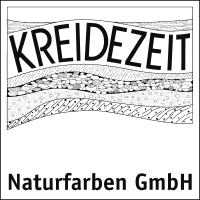KREIDEZEIT Marmorino, Tadelakt, Lime Wall Finish -smooth- and Stuccolustro are not suitable as a substitute for a tile backsplash above the kitchen worktop or hob without further follow-up treatment. Even if these surfaces are soaped, they only repel water and watery liquids. Grease splashes, however, leave permanent stains.
Vigorous scrubbing will damage these surfaces. Even KREIDEZEIT Punic Wax and Carnauba Wax Emulsion do not provide suitable additional protection against grease splashes. One option is to protect these beautiful surfaces with ventilated, fixed or sliding glass panels.
Alternatively, these surfaces can also be oiled over the entire surface, which brings about a clear accentuation of the pigments and beautiful colour deepening through superficial transparencies (optical wet effect) and creates surfaces that are easy to clean. Grease splashes no longer appear so conspicuous on these surfaces. It is also important to create smooth, glossy surfaces. Rough or very matt surfaces are generally more difficult to clean.
Work steps
To prevent the substrate and its possible irregularities from shining through the oiled layer, the colouring decorative surface should have a minimum layer thickness of 2 mm.
These are the typical layer thicknesses of KREIDEZEIT Lime Wall Finish -smooth-, Marmorino and Tadelakt anyway. For the thin-layer Stuccolustro or Stucco Fine, a carrier layer of e.g. KREIDEZEIT Lime Wall Finish -smooth- in the same colour shade should be applied beforehand.
The surfaces are first finished according to the general processing instructions including compacting to gloss and also soaped with KREIDEZEIT Polishing Soap. The soap allows the oil to be absorbed more slowly and evenly during the following work step.
It is important here that the last layer in each case is finished with even motivation and even pressure. Otherwise, less compacted areas will absorb more oil and more compacted areas will absorb less oil and may then have different colour intensities.
Before oiling, the soaped surface should rest for 4-6 weeks so that the surface carbonates.
For oiling intensively coloured surfaces we recommend our linseed oil-based Multi Purpose Wax, on white or only delicately tinted surfaces our non-yellowing Safflower Multi Purpose Wax. Our Multi Purpose Waxes are highly oily mixtures with a little beeswax. Due to the wax content, they are somewhat thicker than pure oils and do not run
down the surface. This avoids running traces, which usually cannot be levelled out later. Also means: thin oils are not well suited for this kind of work.
Oil the entire surface quickly and generously with a broad brush or sponge!
Individual wipes that are left standing are absorbed more deeply and create more intensive colour deepening that usually cannot be levelled out later. Allow the Multi Purpose Wax to soak in for about 30 minutes! Then wipe the surface dry with a soft absorbent cotton cloth and remove any oil that has not been absorbed completely.
IMPORTANT: Please always create sufficiently large test areas first, e.g. on remnants of plasterboard or gypsum fibreboard, in order to familiarise yourself with the materials, their processing and the subsequent visual effect.
Tadelakt surfaces have typical fine microcracks in the polished lime sinter layer. These are usually intensified in colour by oiling or stand out darker.
Cleaning and maintenance
Take care of the oiled surfaces for another 2-3 weeks, avoid soiling during this time so that you do not have to damp clean the surfaces yet. During this time, the oils harden completely and thus achieve their full protective effect.
On these oiled surfaces, grease splashes will cause far fewer problems and often remain completely invisible. Nevertheless, careful handling is recommended. Very heavy splashes of grease can still cause slight darkening in the affected areas, especially if the surfaces are not adequately maintained, and should be removed as quickly as possible.
You can easily clean the surfaces with a soft sponge/ wiping cloth and soapy water, e.g. KREIDEZEIT Corfu Soap. If after some time of use and repeated cleaning the surfaces appear dull, re-care or refreshing with KREIDEZEIT Multi Purpose Waxes is necessary to keep the protective effect of the surfaces.
Attention: Do not clean with other (bathroom) cleaners, scouring agents, alkaline agents or abrasive sponges and cloths, these will destroy the oiled surfaces.
If necessary and prior to the work, we would be happy to provide you with advice.


